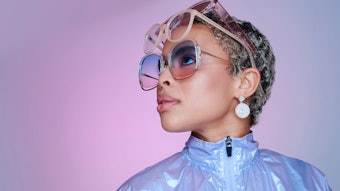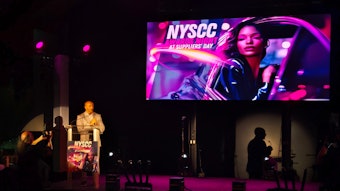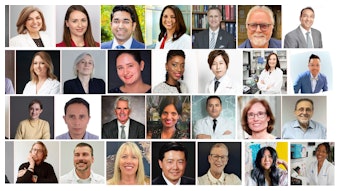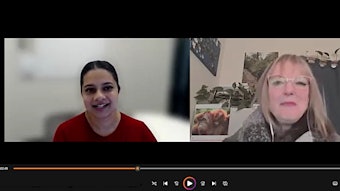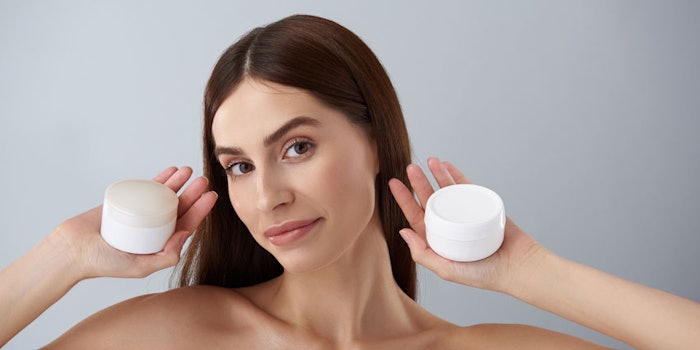
'Clean' beauty may have started as marketing hype, following the path of the foods industry. But today’s consumers now hold faith in products brandishing this label. Does this put the onus on the industry to uphold this claim? And could it mean new standards?
The IFSCC debated this topic in its first pro/con-style online event putting forth arguments as to whether “clean” beauty is both safer and real. Moderated by Perry Romanowski, of Element 44 Inc., the discussion featured Nicole Acevedo, Ph.D., founder and CEO of Elavo Mundi Solutions, LLC, arguing in favor of “clean” beauty and Mojgan Moddaresi, Ph.D., of Personal Care Regulatory Ltd., debating against it. Some 1,000 attendees were polled before and after the debate to “vote” on the outcome. Overall, they were not convinced that “clean” meant “safer”—although compelling arguments were made for standardizing “clean” beauty claims, especially for the U.S. market.
See related: [podcast] Defining 'Clean Beauty'
‘Clean’ Emerges from Lack of Oversight
In support of “clean” beauty, Acevedo underlined, “Consumers are now taking into account whether products are created with the health and safety of humans and the environment in mind.” She set the tone with her view that “chemical” is not synonymous with “harmful,” then compared the European Union’s (EU’s) vs. U.S.’s regulatory oversight (or not) of cosmetics and cosmetic ingredients. According to Acevedo, this difference set the emergence of “clean” beauty in motion.
“Europe has banned more than 1,300 chemicals from cosmetics,” she said—although notably, many of these were never used in cosmetics from the start. “Information on ingredients such as animal testing, toxicity profile, chemical structure, levels of exposure, etc., is required [in the EU],” she added. “Comparatively, in the U.S., just 11 ingredients are banned from use in cosmetics.” In addition, she noted more than 12,500 chemicals are approved for use in cosmetics but have not been assessed for safety by a “publicly accountable agency or regulatory body.” In her view, the Cosmetic Ingredient Review (CIR)—which was created to work independently from the industry and with the U.S. Food and Drug Administration to ensure cosmetic ingredients are safe—is too closely tied to the industry to ensure non-biased assessments.
“The only U.S.-based oversight comes from a law passed in 1938, under which cosmetic ingredients do not require the FDA’s premarket approval, with the exception of pigments; it requires no safety data or safety test requirements; and the FDA cannot issue recalls if cosmetics are found to be unsafe.” She added there are also no FDA regulations for natural or organic products.
See related: Simple and Safe: Formulating 'Clean Beauty'
“Why is oversight important? We are exposed to many chemicals daily,” Acevedo said. “Women use about 12 personal care products per day. For men, it’s six and teenage girls use 17. This accounts for hundreds of chemical exposures in daily routines. We need to ensure the safety and health of consumers every day.”
Evolution of ‘Clean’
Describing the evolution of “clean” beauty, Acevedo cited its origin from the broader natural/organic trend in foods (1990s-2000s). Then in 2004, the Campaign for Safe Cosmetics was launched, along with the EWG’s Skin Deep database, whose goal was reportedly to “educate consumers of the hazards in cosmetics,” and to ensure manufacturers of cosmetics products are held accountable. “Between 2009 and 2012, a small number of brands began to respond to emerging scientific evidence of the health impacts of certain chemicals,” she said.
In 2013, the industry saw a much clearer differentiation in products developed by implementing green chemistry and/or in consideration of the effects of products on human health and the environment; the latter led by Beauty Counter. In 2015, retailers and brands started to adopt concepts in relation to the term “clean” and ever since, products marketed as such have experienced massive growth.
Where can we go from here? Acevedo believes the focus now is to ensure there is consistency in standards for “clean” beauty, with transparency as the overall guiding principle, in addition to an understanding of a product’s impact throughout its life cycle. “We need to harmonize ‘clean’ standards,” she said, noting that without clear regulatory guidelines, everyone is left to make their own boundaries and define this space.
''[Clean beauty]' did start out as a trend/marketing term 5-6 yrs ago…[but] it should be used responsibly since the term has become known. Don’t demonize where it came from, people were responding ... with real concern and without real guidance.'
Lost in Semantics: Hazard vs. Risk
From the opposing view, upholding “clean” beauty as marketing hype, Moddaresi highlighted that manufacturers are accountable for testing to assure products are safe before they can be placed on the market. “The EU has more guideline and tools but the same principle [for] safety is also [held] in the U.S. Instead of tools, the brand is held liable,” she said. She felt that “clean” beauty claims are simple fear-mongering tactics against would-be competitors. In fact, beyond differences in regulatory oversight between Europe and the U.S., another important distinction is free-from claims, which are allowed in the U.S. but not in Europe, giving rise to self-created claims.
Moddaresi reflected on the precautionary principle and outlined how consumers get lost in semantics, such as the difference between hazard vs. risk. She explored CMR ingredient classifications and explained how suggestive (not conclusive) data from one material often is translated out of context by non-experts to an entire class of materials without proof, escalating marketing hype.
She also cited the all-familiar quote, “The dose makes the poison,” describing how even water can have a lethal dose. She illustrated this further, asking attendees, “Do you eat apples and potatoes?” As Moddaresi explained, apple seeds contain cyanide and potatoes contain solanine. Both can be lethal at high levels but generally, most consumers are only exposed to minute amounts.
Furthermore, she gave skin its due credit. “Skin is not a sieve,” she said, outlining the challenge in penetrating it with absorption data for ingredients such as phthalates, dioxins and PCBs, bisphenol A, parabens, UV filters, triclosan and more.
Moddaresi concluded that the industry must get away from fear mongering and choose to tell product safety in a different way. “Science works. It is not perfect and it can be misused,” she wrote, in her presentation. “It is only a tool but it is by far the best tool we have; self-correcting, ongoing and applicable to everything. It has two rules: first, there are no sacred truths; all assumptions must be critically examined. Second, whatever is inconsistent with the facts must be discarded or revised.”
‘Clean’ Impact and Ingredient Safety Debate
After the initial talks, Romanowski initiated a debate regarding regulatory oversight and product safety. He challenged Acevedo, “Assuming you get the industry to adopt clean standards worldwide, how will you measure that it has some sort of positive impact?” He gave the example of how seat belts in cars have a measurable impact.
“Data primarily around human health and cost of burden to society is out there,” Acevedo said, highlighting ways to measure the overall impact in a long-term and generational sense, but also the need to do business in a holistic way. “I want to be clear: I completely agree that [proven science] …is the way to move forward. That said, science is only as good as it is today. Science will get better and change as we move ahead and find better ways.” Case in point: parabens have been implicated as endocrine disruptors. “They are relevant at low doses because of their mode of action in body,” Acevedo said, adding that the science is still being developed to better elucidate this action. “We have to understand that science evolves,” she said.
Beyond differences in regulatory oversight between Europe and the U.S., another important distinction is free-from claims, which are allowed in the U.S. but not in Europe, giving rise to self-created claims.
Next, Romanowski asked Moddaresi to explain how she would respond to brands that adopt the precautionary principle; i.e., the assumption that any risk is too much. “For every ingredient, we have assessments based on exposure [to determine] the margin of safety,” Moddaresi said, adding that ingredients also are examined in the context of product category—and that fact that variations occur between suppliers, which is why all products must be safety tested. “[Safety in the] cosmetic market is not really as bad as ‘clean’ beauty wants to believe…if it was really that bad, how would brands not be sued in a public space?” She underlined again, however, that it is up to the manufacturer to prove safety.
Romanowski pressed Acevedo regarding the scientific evidence that would be used or is being used to create “clean” beauty standards. “[‘Clean’ beauty] did start out as a trend/marketing term 5-6 yrs ago,” she said, “…[but] it should be used responsibly since the term has become known…Don’t demonize where it came from, people were responding as consumers with real concern and without real guidance or regulation,” said Acevedo. “Things [in the U.S.] have taken on their own [definition and] snowballed, whereas the EU has made clear boundaries. What I would like to see is [getting] it out in the open. [Right now, ‘clean’ is] not a clean term, it’s messy; but if we continue to work to harmonize standards around it, [we can] make it clearly understood and [determine] what the tenets of it are so we can grow and move forward in this space.”
Pressing the idea of “clean” beauty rules further, Romanowski asked, “Is there ever an ingredient [left off the list] that goes back on the list to be [considered] “clean”? and what would qualify for this?” Acevedo responded, “Because it’s not regulated, things can get shifted around. There are things like CMRs that would never be made ‘clean.’ Silicones are something I can speak to scientifically, [as they don’t] have an impact on human health. The impact of the residual product in environment is the concern.” She concluded that some ingredients could therefore be added back on the list since, with more education, concerns over their impact on human health and the environment, or their sustainable status, etc., are made clearer and could fall into a brand’s definition. “It’s an education process,” she said.
Moddaresi added her thoughts about silicones, criticizing “clean” beauty for classifying all silicones into one family with the same negative judgment. “Silicones are big family, and there are different chemicals in there that are safe…I think it is important not to criminalize the whole family because of one issue…We can’t ban the [whole] family of chemicals, which [upholds] the case for scientific principles.”
Conclusions
Wrapping up their perspectives, Acevedo concluded that “clean” beauty has come into fruition, and that sustainability and transparency are key tenets. “Consumer trust really must be built to move forward,” she said, adding it also is important to consider that science evolves. “Harmonization of this term [will be important] to understand what we mean…and to know we are speaking the same language,” she added. Moddaresi, on the other hand, expressed that “‘clean’ beauty denigrates other ingredients. Don’t fear monger; it will backlash,” she cautioned.
Before the debate, 49% of attendee respondents reported they felt clean beauty did not mean safer, whereas 27% thought it did and 23% were unsure. After the debate, 62% supported the “clean” beauty is not safer view, whereas 22% supported the is safer view; 14% remained unconvinced. Romanowski notably fell into the not safer camp. It remains to be seen, however, if the points raised initiate a future framework to harmonize standards and require supportive data that at least makes it “seem” safer.
